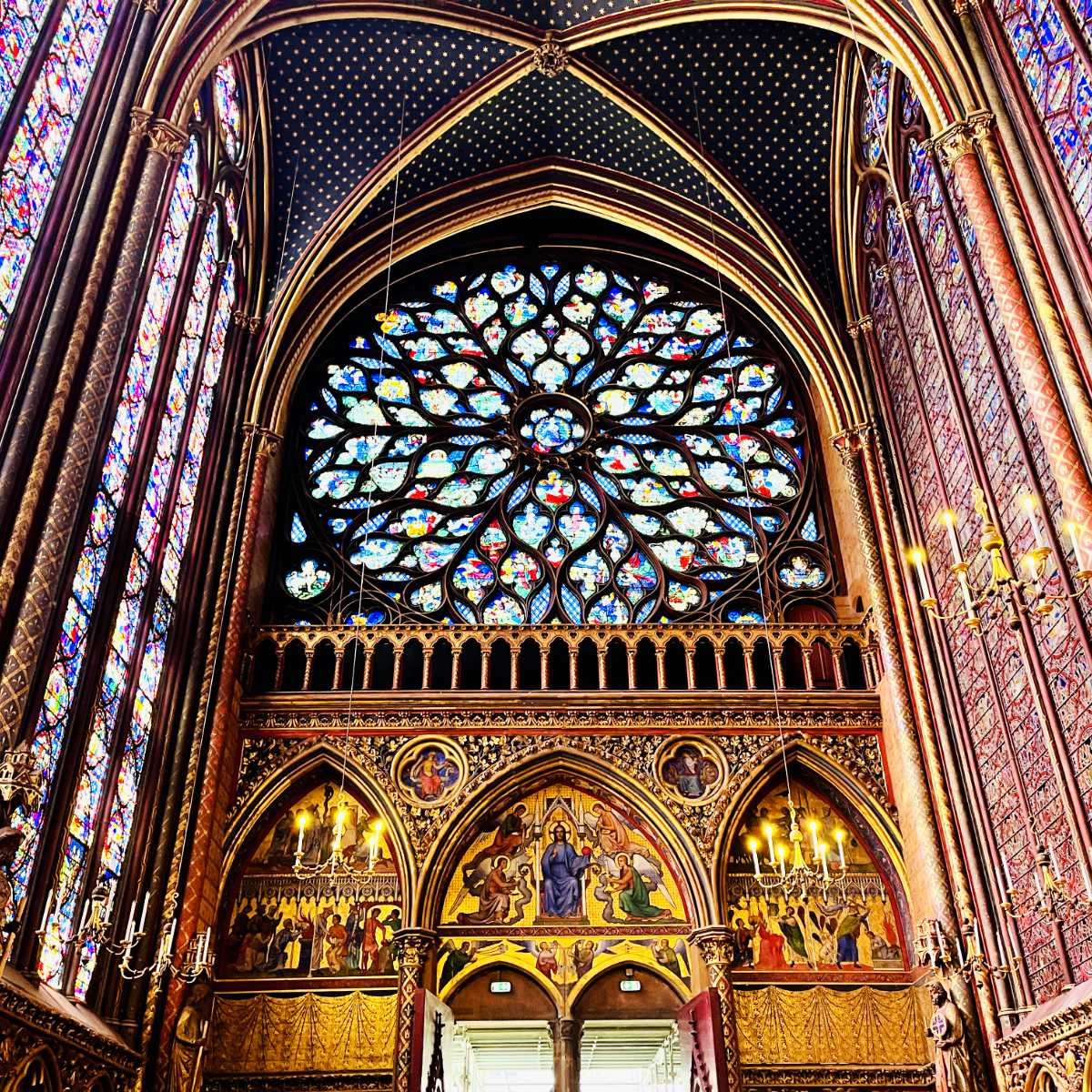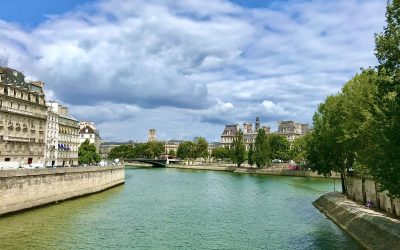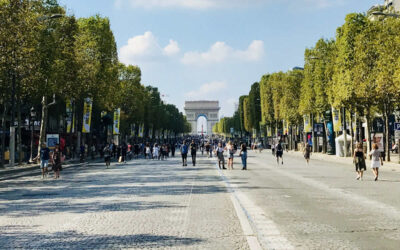The churches in Paris are a visual feast. They are not only beautiful masterpieces of art and architecture, they are also places that tell fascinating stories as they continue to serve the community around them.
Amongst the world’s most beautiful cathedrals and churches, many of the churches in the city of Paris have stood there for centuries. From peasants to Kings and locals to tourists, these church walls have seen it all.
Whether you’re religious or not, visiting Paris’ churches is a must, as they offer a glimpse into the city’s rich history and culture. So let’s have a look at the best churches and cathedrals to visit while in Paris, shall we? Allons-y!
- 1. Notre Dame de Paris Cathedral
- 2. Sainte Chapelle
- 3. Basilique du Sacré Cœur de Montmartre
- 4. Église de la Madeleine
- 5. Saint Sulpice church
- 6. Abbey of Saint-Germain des Prés
- 7. Cathédrale Saint-Louis-des-Invalides
- 8. Saint-Étienne-du-Mont church
- 9. Église Saint-Séverin
- 10. Cathédrale Saint-Vladimir-le-Grand
- 11. Church of Saint-Louis-en-l'Île
1. Notre Dame de Paris Cathedral
Standing majestically on the banks of the River Seine, Cathédrale de Notre Dame de Paris has been a focal point of Parisian life for centuries. The Cathedral is located on an island in the center of Paris, called Ile de la Cité, chosen for its strategic position and defensive location.
The site of the first Roman civilisation here was called Lutece and there are plenty of sights and history in the area. For locals and visitors to the city, this area is the true heart of Paris.
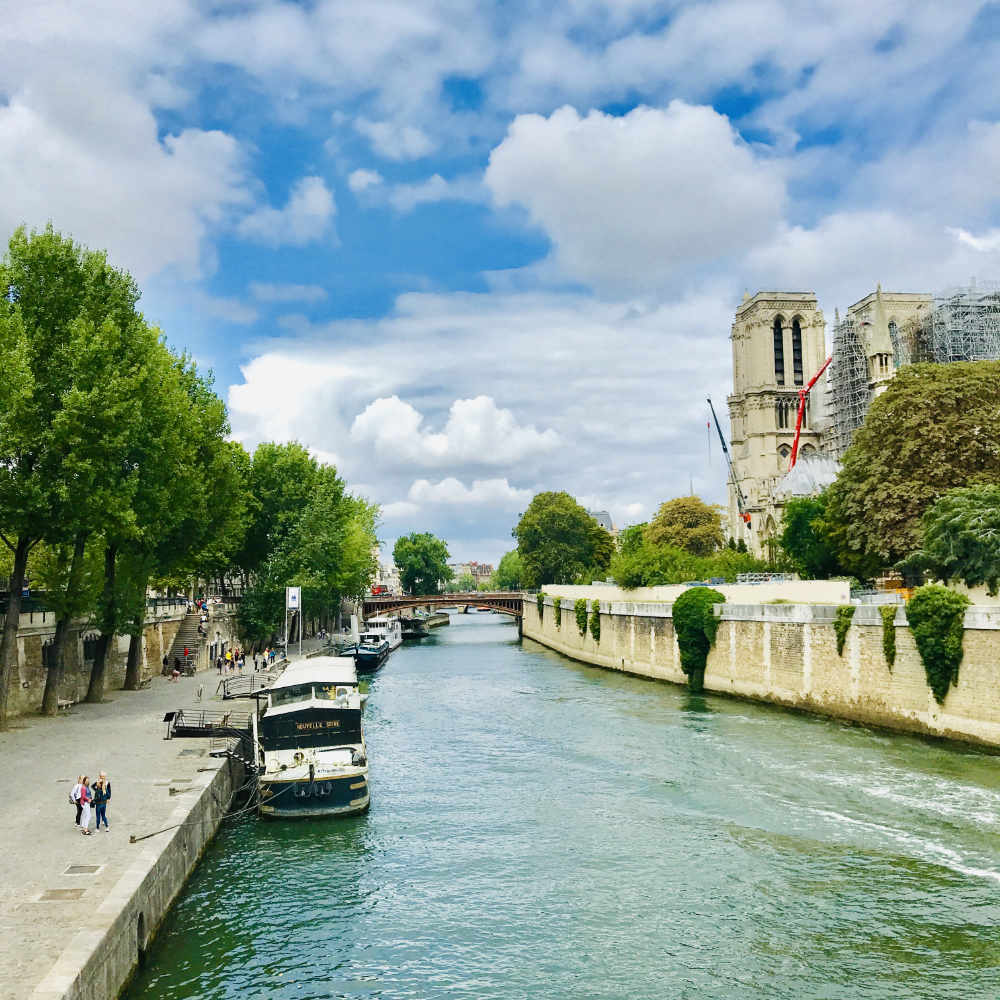
It is believed that the earliest religious building on that location was a Gallo-Roman temple dedicated to Jupiter. This was and still is the historical center of Paris.
The Roman temple was eventually replaced by a Church to Saint Etienne. Construction of the current cathedral dedicated to Mother Mary began in 1163 AD and the high altar was consecrated on 19 May 1182. It was the golden age of cathedrals, when several other historic cathedrals were built across France.
Significant renovations have occurred several times over the centuries, including the addition of the spire in the 19th century.
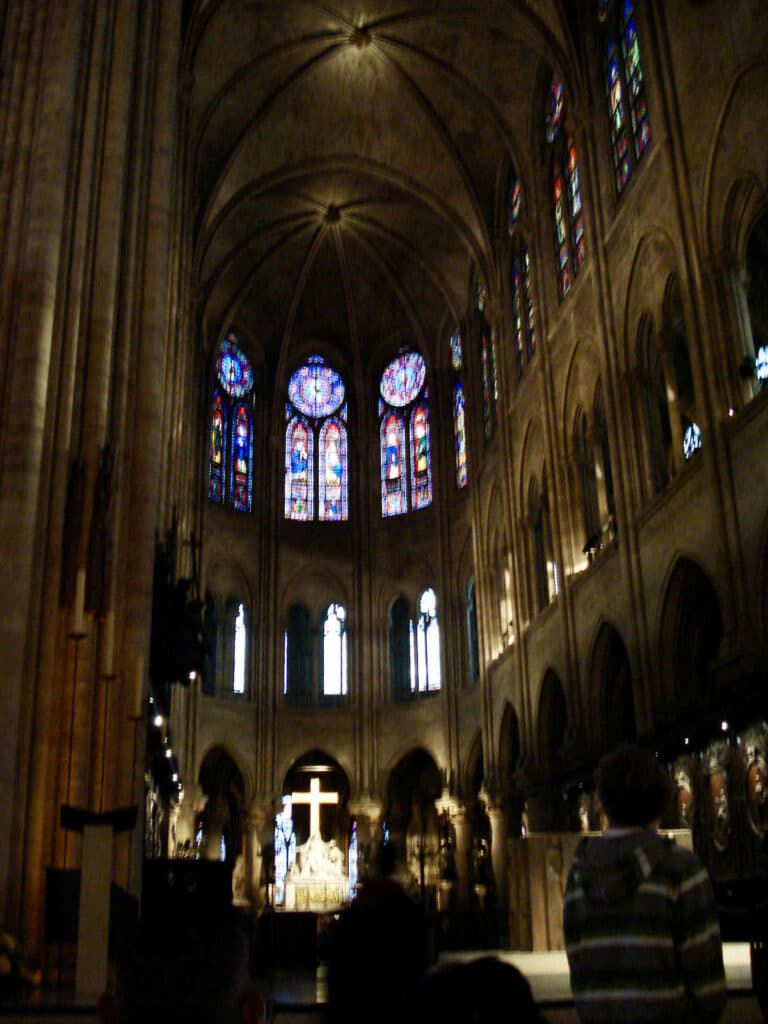
Today it is among the most visible and celebrated landmarks of Paris. However it suffered a significant damage in a fire in 2019 and is currently under reconstruction.
It is still a beauty however, even with a few scars. You can book a guided tour around the area here.
2. Sainte Chapelle
The Sainte Chapelle church is a little hidden, but to locals and tourists in the know, this is the church to visit.
It is a gothic royal chapel constructed in 1248 as a home to the Crown of Thorns and is located within the medieval Palais de la Cité (Conciergerie). Because the Palais de la Cité is still a working courthouse, visitors must pass through airport-style security in order to get to Sainte Chapelle.

It is one of the earliest surviving buildings of the royal palace. It was built by Saint King Louis IX, one of the most famous saints in France, in order to house the Crown of thorns and other relics that the King had brought back from Constantinople.
Although damaged during the French Revolution, Saint Chapelle was mostly restored in the 19th century. You can read more about French history here.
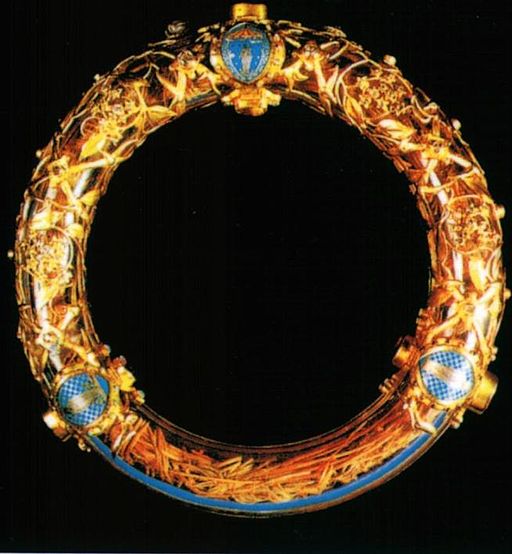
The Crown of Thorns was moved to Notre Dame de Paris during the French Revolution. It currently resides in a safe in Paris’s Louvre museum for security purposes.
However Sainte Chapelle still has one of the most extensive 13th-century stained glass collections anywhere in the world. You can purchase your skip-the-line tickets here.
3. Basilique du Sacré Cœur de Montmartre
Consecrated in 1919, Sacré-Cœur Basilica is located at top of butte Montmartre, and is the highest point in the city (except for the Eiffel tower). It was built as a penance for the local riots and troubles that happened during the Paris Commune of 1871 in Montmartre.

Today, it is one of the most famous churches in France. The Church is free to enter and certainly quite impressive to explore.
It is in coming back out of the Basilica, that you notice the views. Have a seat on the stairs and admire the panorama of the whole city.
The best views are at sunset from this northern point of the city. Avoid the street vendors and tricksters that hang around there though. Their modus operandi is to distract excited tourists and pickpocket them.
4. Église de la Madeleine
Located in the 8th arrondissement, the Church of Saint-Marie-Madeleine and is usually called La Madeleine. It is a Catholic parish church devoted to Mary Magdalene and the surrounding square it sits on is also called Place Madeleine.
It was originally planned by Louis XV to lead towards the new Place Louis XV, (now Place de la Concorde where the French royals were beheaded). Napoleon Bonaparte had it redesigned in the Neoclassical style with Greek pillars to become a monument to the glory of his armies.
However, after his downfall in 1814, it continued construction as a church and was completed in 1844.
5. Saint Sulpice church
Church of Saint Sulpice is these days most famous for being featured in the Dan Brown novel Da Vinci Code.
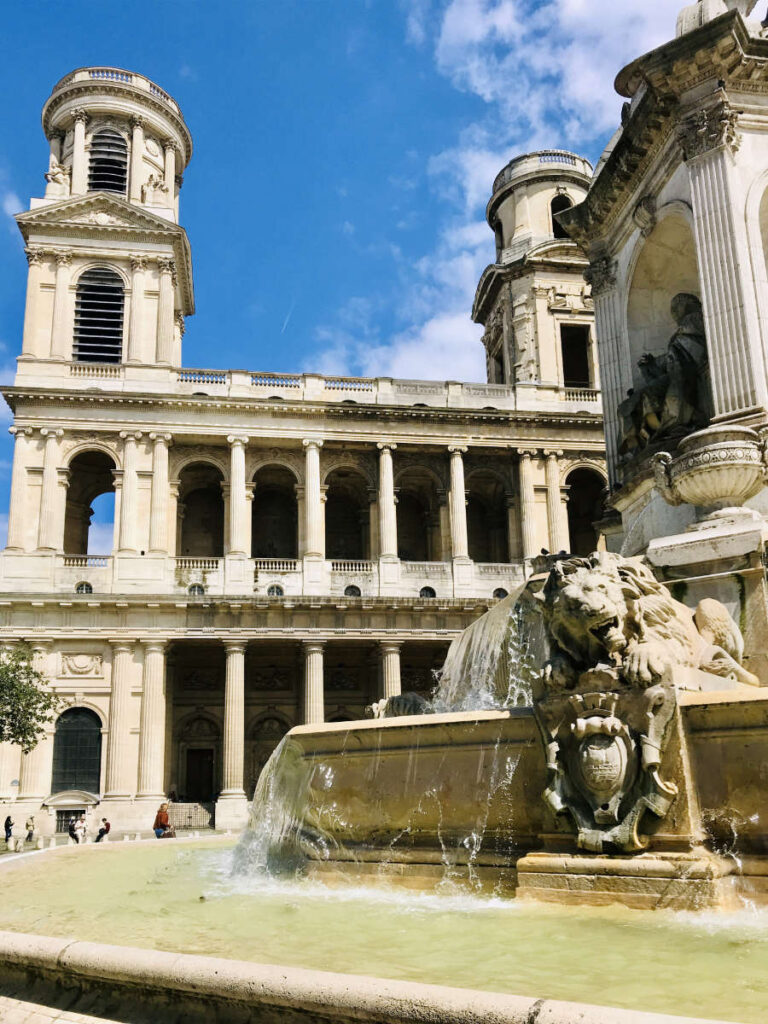
But this historic church is one of the oldest in the city, just slightly younger and smaller than Notre Dame de Paris. The current building dates back to the 17th century, having been built on top of an older church dating back to the 14th century.
It has long been the church where famous locals were baptised (like the writer Marquis de Sade), married (like Victor Hugo), or buried like the granddaughters of Sun King Louis XIV.
With a stunning alter, impressive organ, and beautiful stain glass windows, the church is well worth a visit.
6. Abbey of Saint-Germain des Prés
One of the oldest churches in Paris has to be the Abbaye de Saint-Germain-des-Prés in the 6th arrondissement. It sits on the site of a Benedictine abbey founded in the 6th century, by Childebert I, the son of Clovis, King of the Franks.
A Roman temple, probably dedicated to Isis, was located close to the site of the church, making this holy ground as far back as the Gallo-Roman era in Paris. It is now named after Saint Germain d’Autun, one of the local saints of Paris.
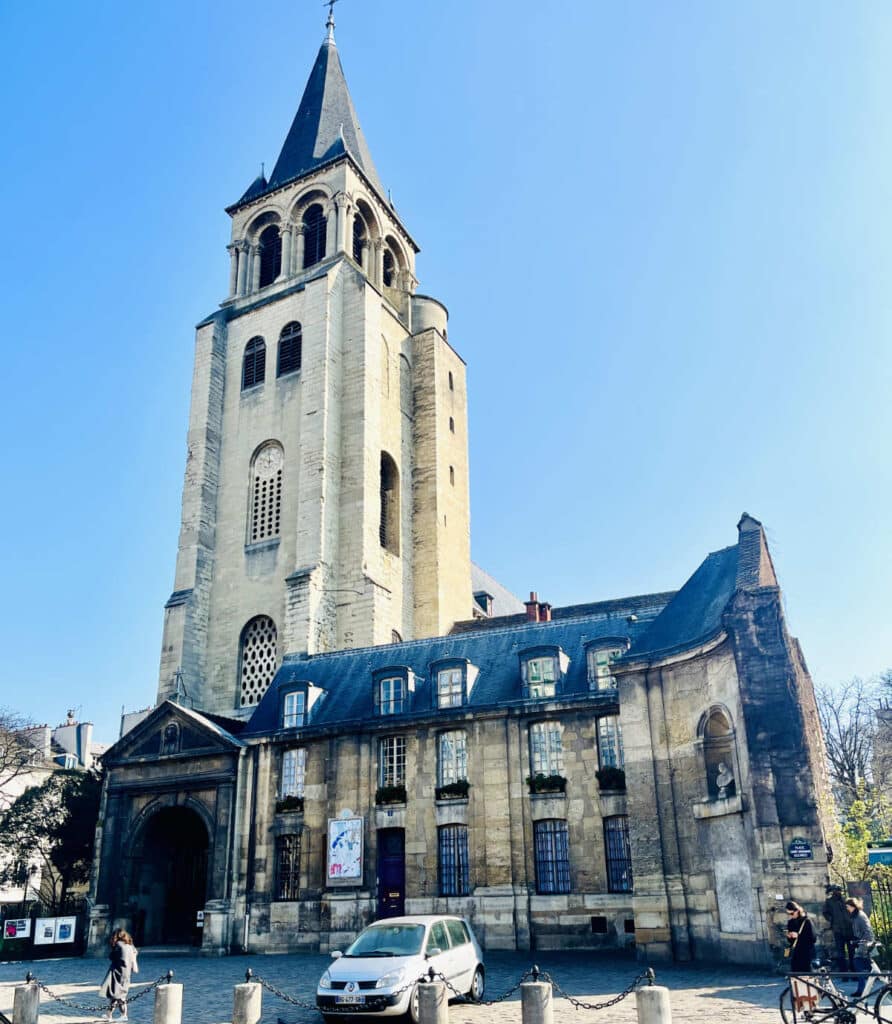
This became the early burial ground for royalty including Childebert and other Merovingian kings in the history of France.
It was destroyed by the Vikings, rebuilt, and renamed in the 8th century for Saint Germain. Burials of French Kings and Queens eventually moved to the Basilica of Saint-Denis, far from the marauders who came along the Seine river.
Abbaye de Saint-Germain-des-Prés eventually became a center for learning, having been located right next to the Latin quarter near La Sorbonne. Under royal patronage the Abbey became one of the most important centers of scholarship in Europe.
In September 1792, during the French Revolution, a group of about 100 priests were imprisoned in the Abbey. They had refused to sign a declaration of loyalty to the new Revolutionary government and were sent out 1 by 1 into the square where they were massacred.
The abbey was significantly damaged during this era and was later restored to what you see today.
7. Cathédrale Saint-Louis-des-Invalides
Cathédrale Saint-Louis-des-Invalides is part of a series of buildings known as Les Invalides in the 7th arrondissement. The site is marked by the golden dome which covers the national cathedral of the French military, and the former Royal Chapel.
It is the tallest church building in Paris at a height of 107 meters and inside has a very interesting permanent resident: the Emperor Napoleon Bonaparte. His body lies in an elaborate monument surrounded by reliefs of his accomplishments.
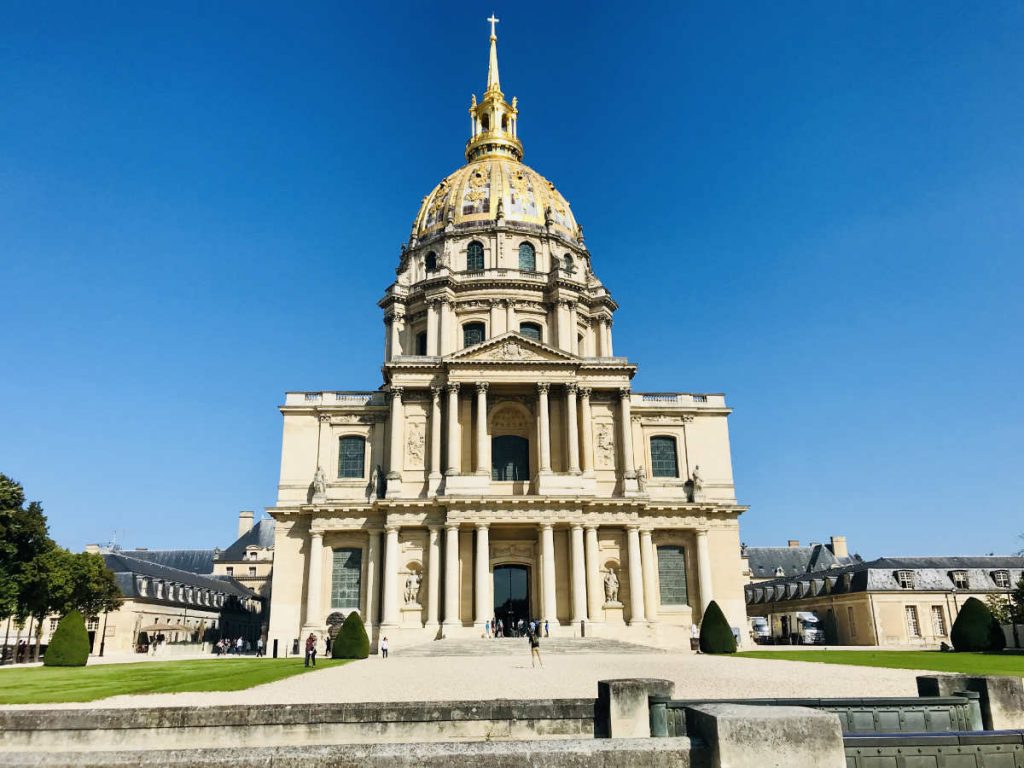
There is also an in-depth museum, Musée de l’Armée dedicated to the military history of France in one of the other buildings of the complex.
It is still today a military base in the center of the city, and many important and symbolic events take place in its courtyards. Lines are long, so book your tickets in advance here.
8. Saint-Étienne-du-Mont church
The Panthéon in Paris was originally intended to be a temple dedicated to Saint Genevieve who lived in the 5th century, at the time of the Roman Empire.
While the Pantheon ended up being converted into a tribute for the great thinkers, visionaries, and writers of France, the Saint-Étienne-du-Mont church in the 5th arrondissement remains dedicated to her, right next to the Pantheon.
Genevieve was an ordinary woman from Nanterre who saw God and became a nun at 15. She would slowly become renowned for her piety and her visions.
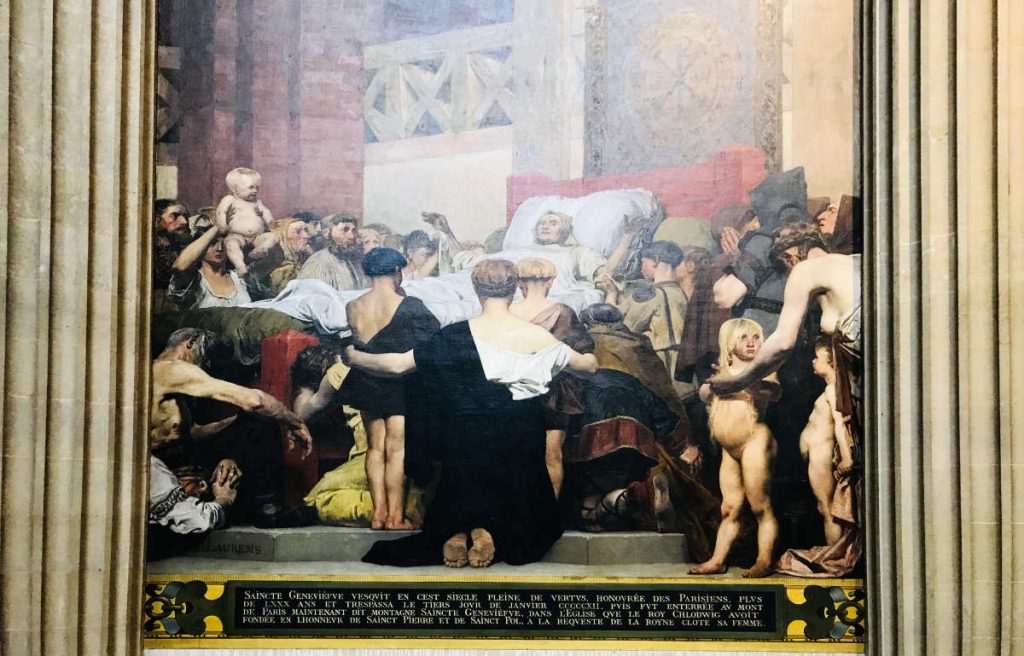
At the time, the Roman empire was gradually decreasing in influence due to the increasing Frankish invasions (a Germanic tribe). In 451 AD, Paris was threatened by the army of Attila the Hun, which had pillaged Treves, Metz and Reims.
Parisians were planning to abandon the city, but they were persuaded to resist by Geneviève who led a prayer-marathon to divert the Hun army. The Saint-Étienne-du-Mont church contains fragments of her tomb, as well as the tombs of inventor Blaise Pascal and revolutionary Jean-Paul Marat amongst others.
9. Église Saint-Séverin
The Roman Catholic Eglise Saint-Séverin was constructed in the 1230 on the Left Bank of Paris in the Latin Quarter. It was rebuilt after a fire and enlarged in the 15th-17th centuries. It is a gothic style church that was meant to be the local paris church for those attending the famed Sorbonne-University of Paris in the Middle ages.
It is one of the oldest churches in Paris, and is named after Saint Séverin of Paris, a devout hermit who lived there in the 6th century.
10. Cathédrale Saint-Vladimir-le-Grand
The Saint-Vladimir-le-Grand Cathedralis a Ukrainian Greek Catholic cathedral located in Saint-Germain des Prés in Paris.
It sits on the site of an earlier church built in the 13th century and demolished at the beginning of the 17th century to make way for the new building. The first stone of was laid in 1613 by Queen Marie de Médicis (wife of King Henri IV of France).
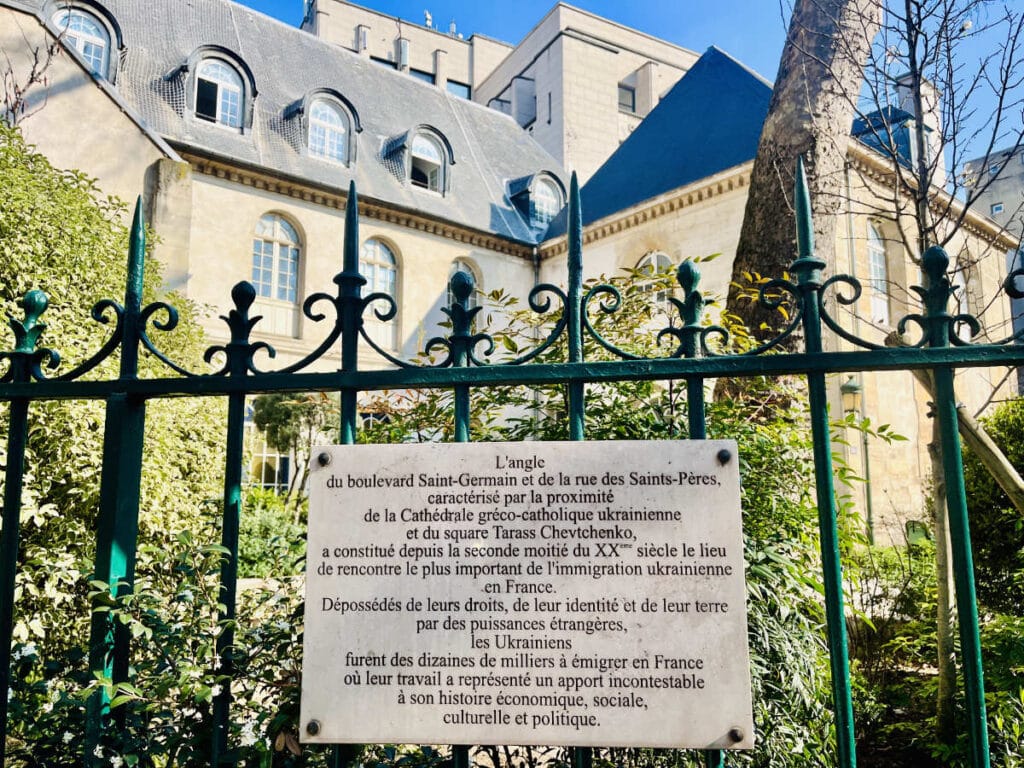
In 1942 during WWII, it was turned over to the Ukrainian community after the mass migration of its refugees who had made their way to France. The name comes from “Saint-Vladimir-le-Grand”, the name of the prince from Kiev who converted to Christianity in 988.
11. Church of Saint-Louis-en-l’Île
Built between 1664-1726, the Church of Saint-Louis-en-l’Île is the only church on Ile-Saint-Louis in the center of Paris. The church is in the French baroque style of architecture, with plenty of gold and white.
Pope Pius VII celebrated mass here in 1805, during his trip to Paris for the Coronation of Napoleon Bonaparte (who was crowned at Notre Dame de Paris Cathedral).

If you enjoyed that article, you may like to read more about things to do in Paris. A bientôt!
